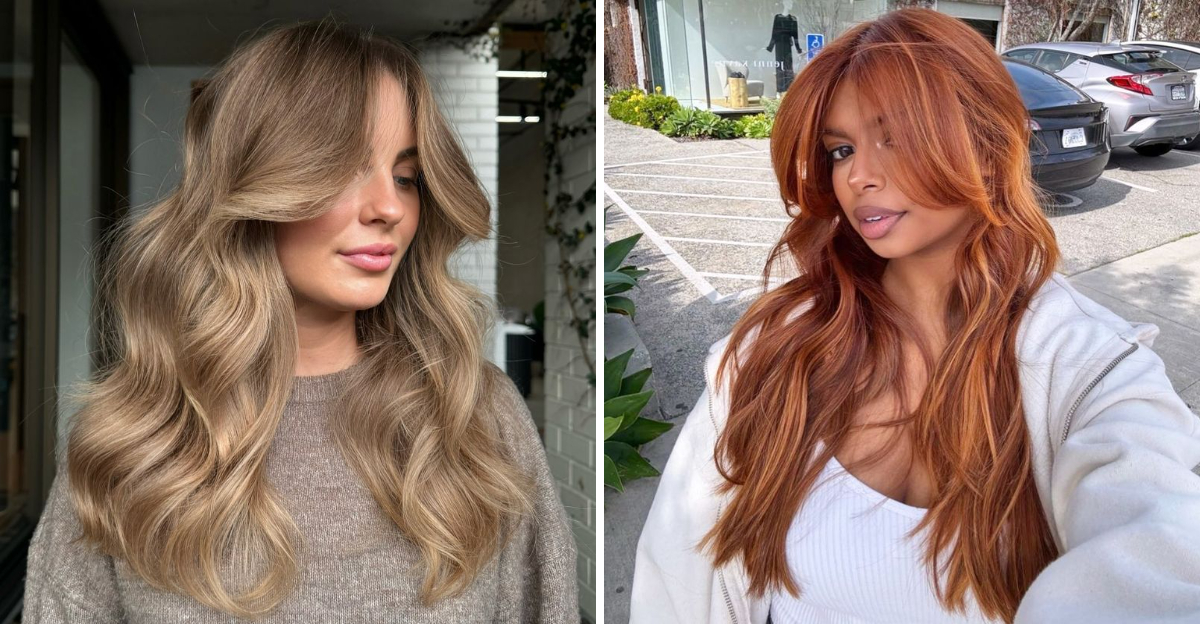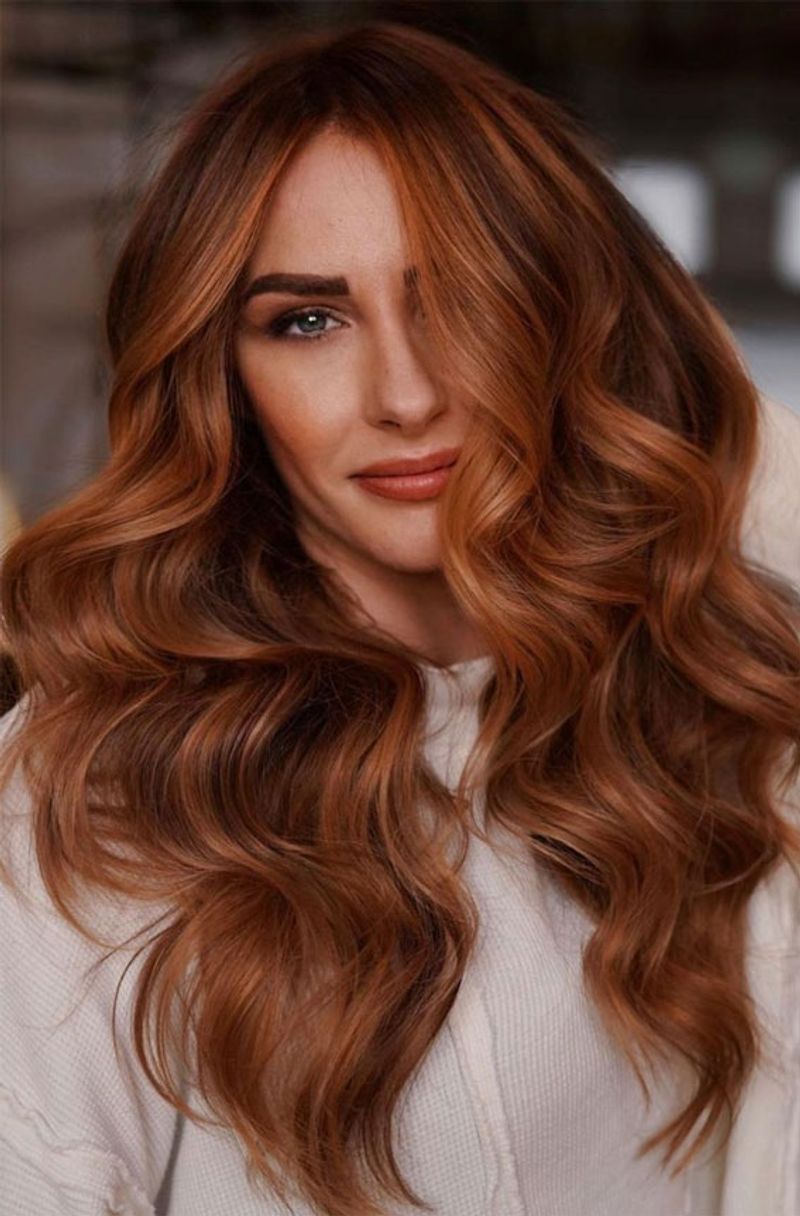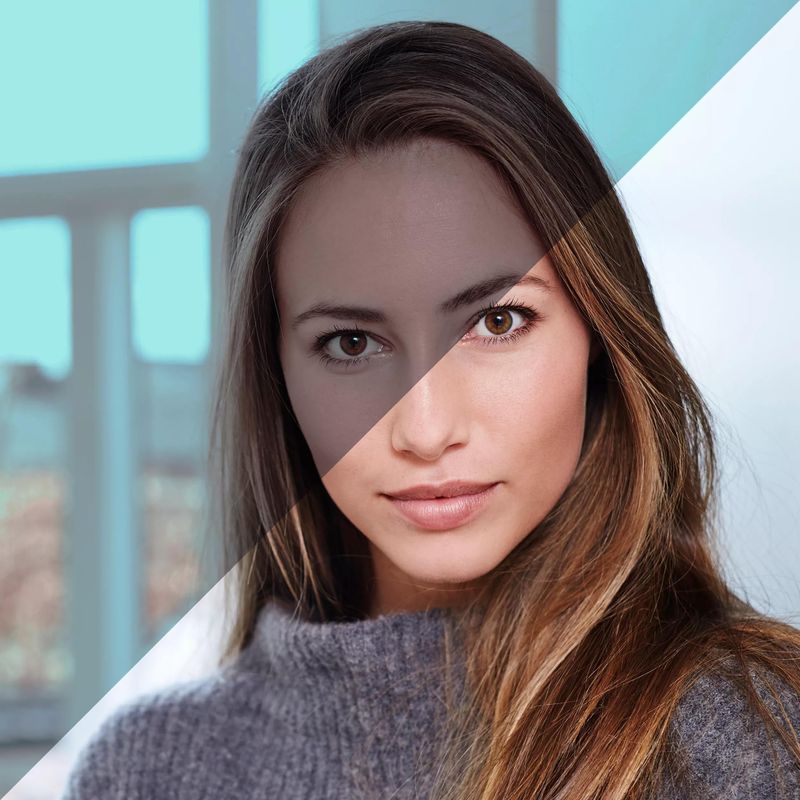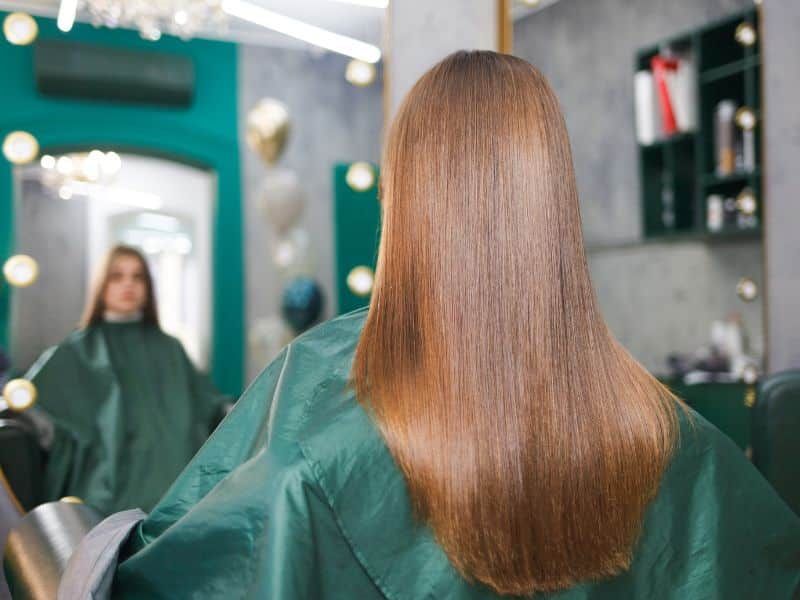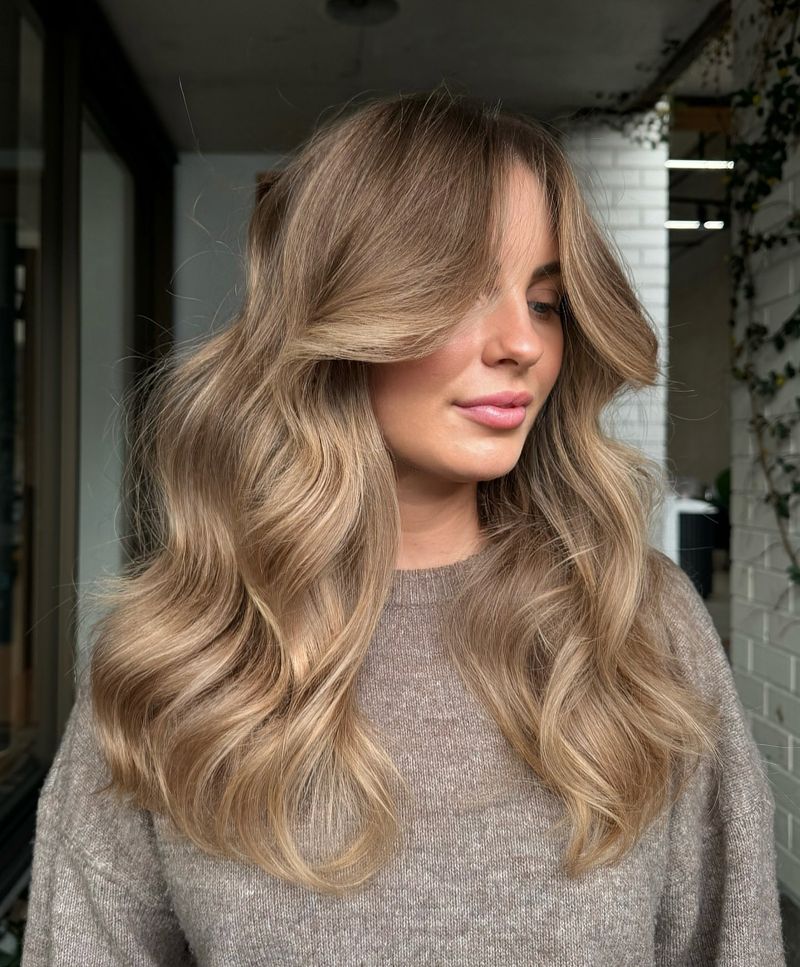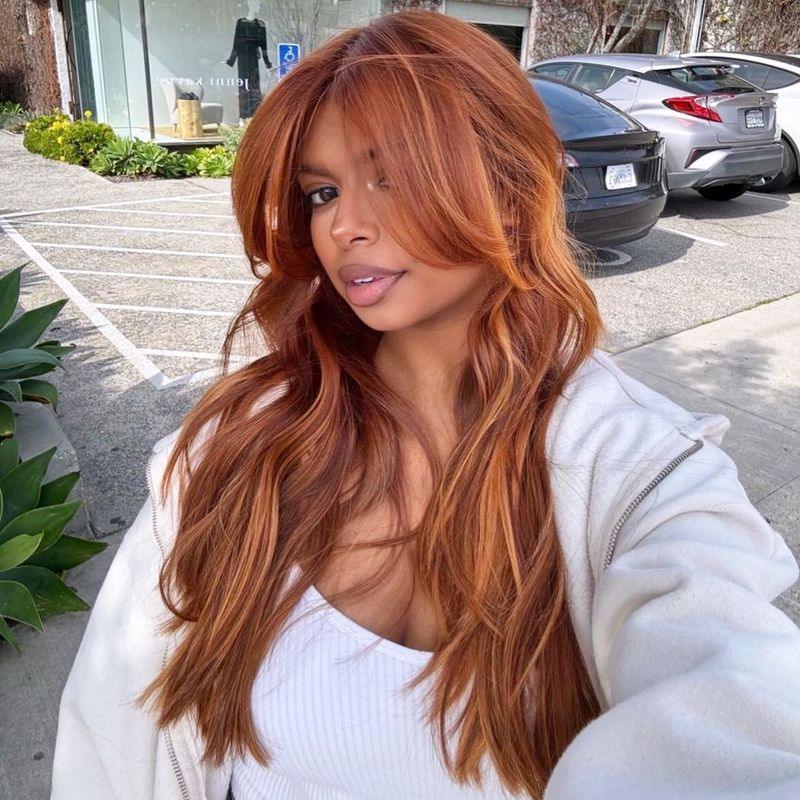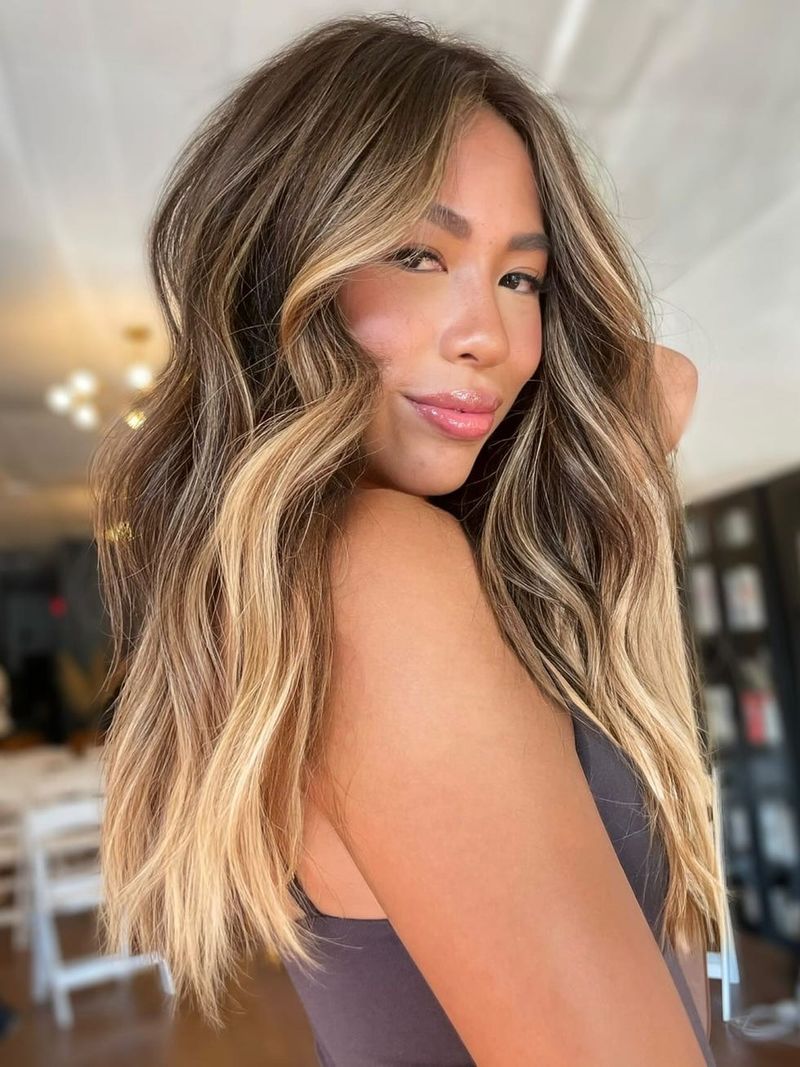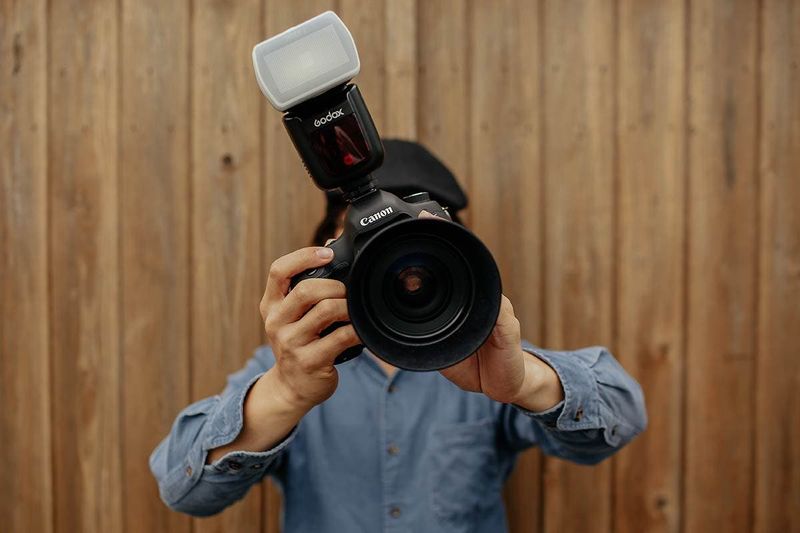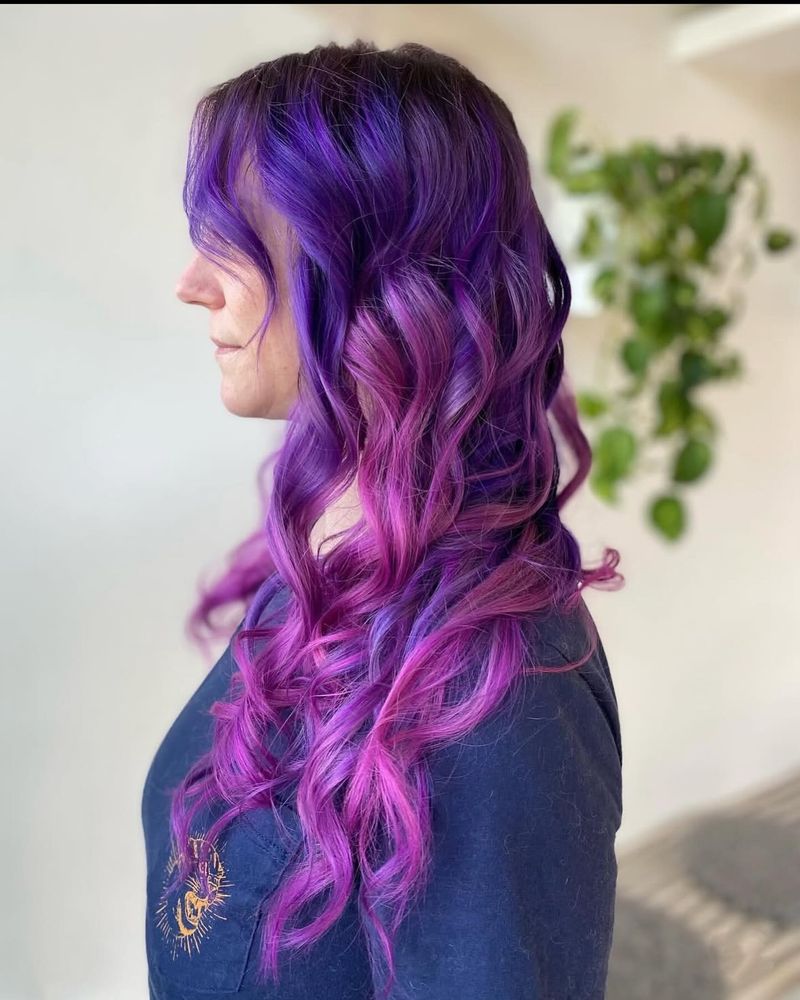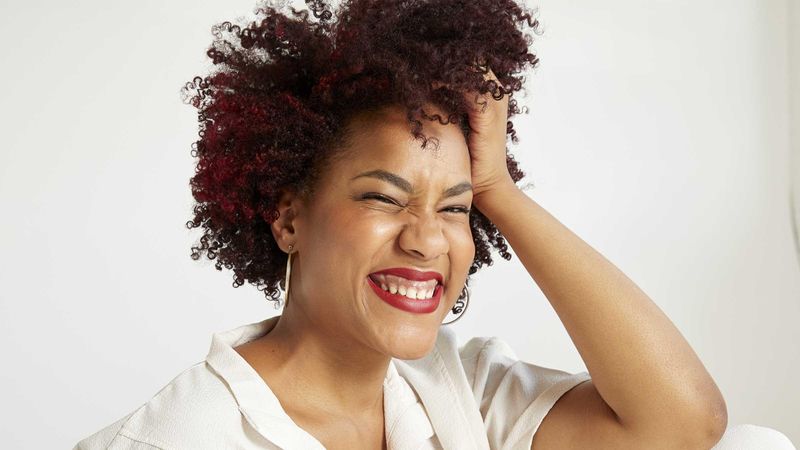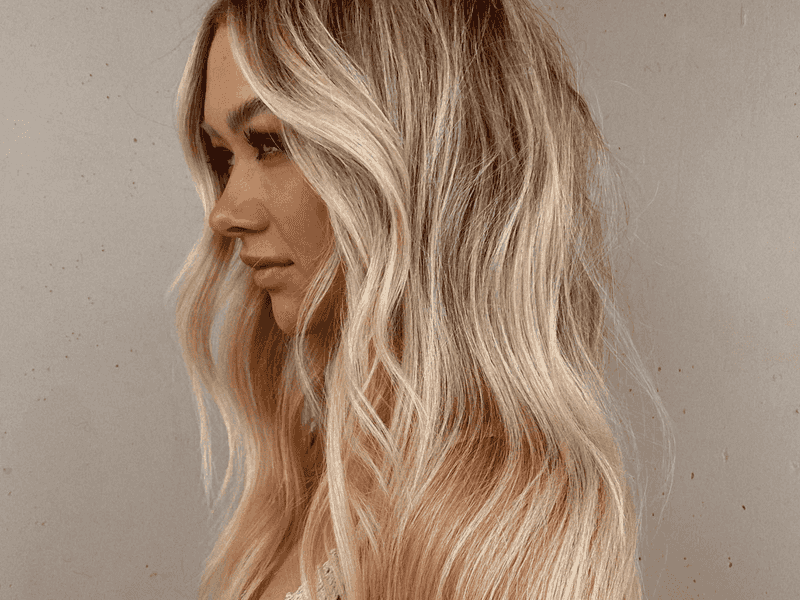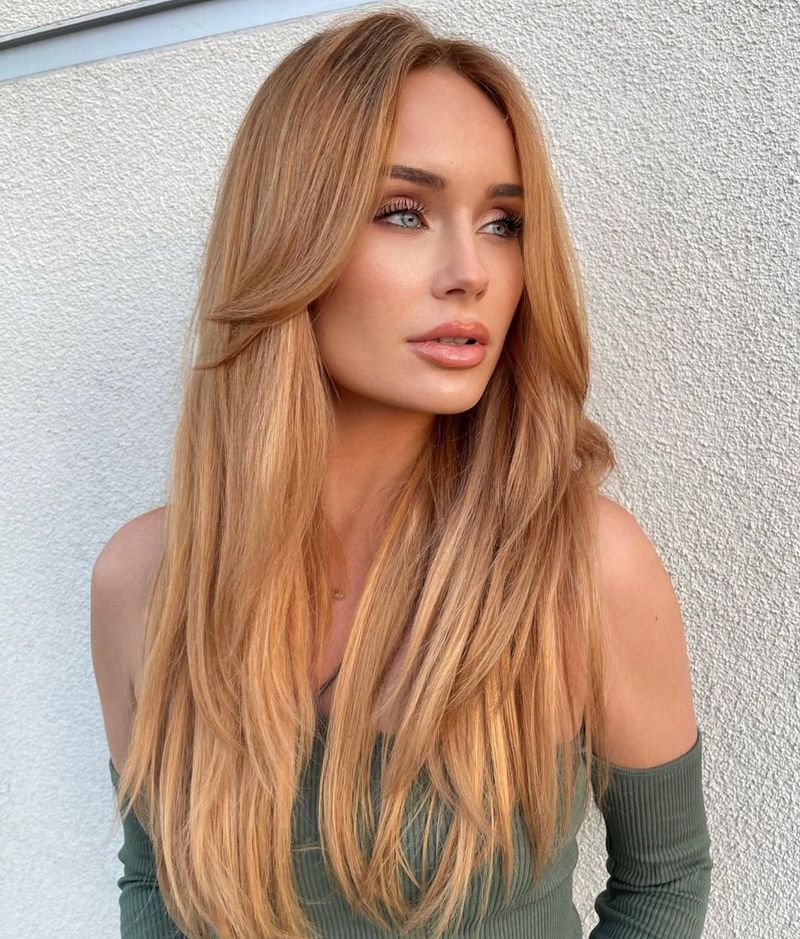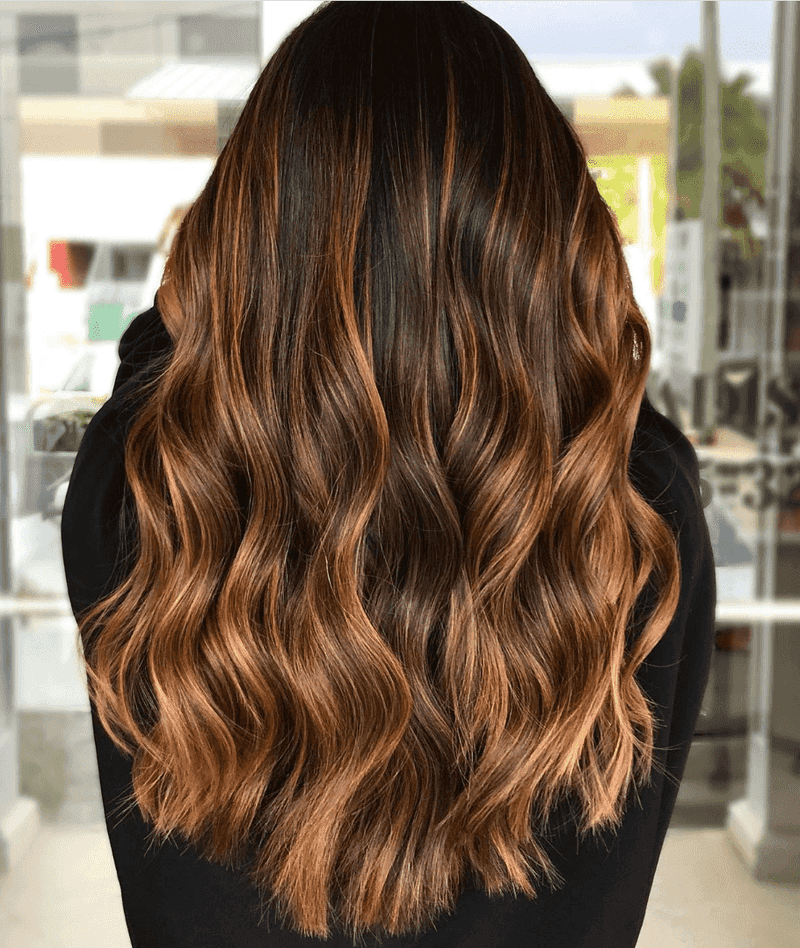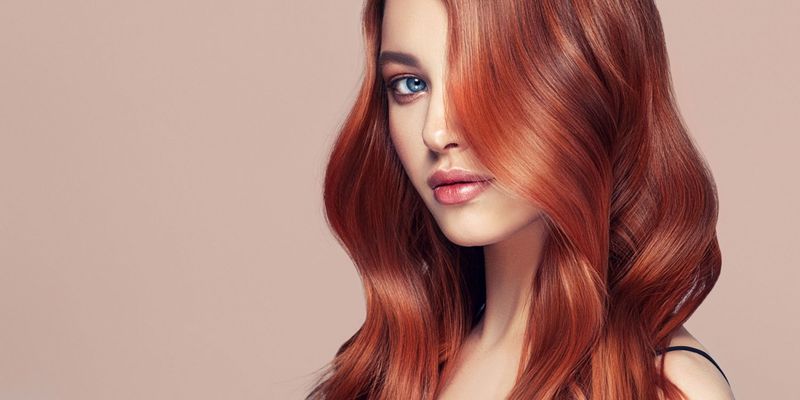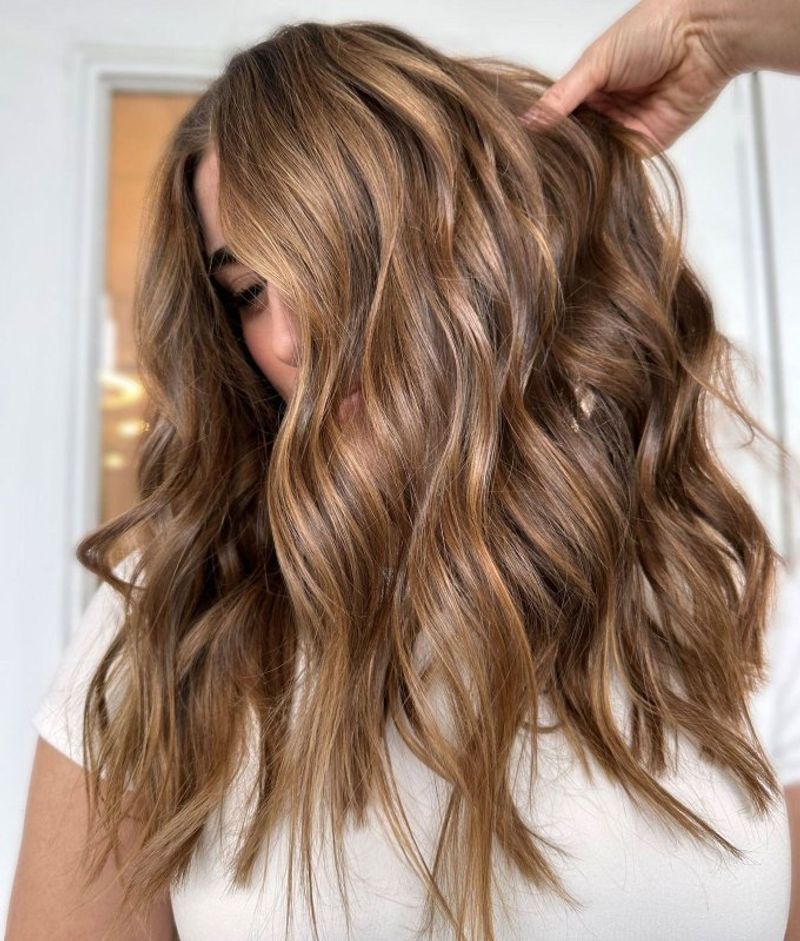You’ve just spent hours at the salon getting your hair color perfected, but when you snap a selfie, something’s off. The vibrant hues you saw in the mirror appear flat and lifeless on your screen. This frustrating disconnect between reality and photos happens to everyone, from everyday selfie-takers to professional models. Understanding why your gorgeous new color falls flat in photos can help you capture your true hair brilliance.
1. Poor Lighting Saps Color Vibrancy
Ever notice how your hair looks amazing in salon lighting but loses its spark at home? Most indoor spaces use yellow-tinted bulbs that can make even the freshest color job appear muddy and one-dimensional.
Natural sunlight brings out true hair color, but timing matters. Early morning or late afternoon sunlight provides gentle illumination that highlights dimension, while harsh midday sun can wash out subtle tones.
Related: -7 Straight-Hair Problems No One Talks About And 8 Easy Fixes That Shine
The fix is simple: find your light! When taking photos, position yourself facing a window or use a ring light that mimics natural daylight. Your vibrant copper or rich chocolate hues will finally translate accurately to photos.
2. Your Phone Camera’s Color Balance Is Off
That fancy smartphone in your pocket might be sabotaging your hair color photos without you realizing it. Most phone cameras automatically adjust color temperature, often with a blue-ish cast that dulls warm tones like reds and coppers.
Phone cameras also compress images to save space, sacrificing color data in the process. This compression destroys subtle dimension and highlights that make freshly colored hair look expensive.
Try using your phone’s manual camera settings or downloading a pro camera app. Adjusting white balance before shooting can make a world of difference, letting those multidimensional highlights and lowlights finally shine through in your photos.
3. You Haven’t Prepped Your Hair Properly
Fresh color alone doesn’t guarantee photo-ready hair. Without proper prep, even expensive salon work can photograph poorly. Dull, parched strands absorb light rather than reflect it, making your color appear flat and lifeless through the camera lens.
Product buildup creates a barrier that prevents your true color from shining through. That invisible film might not be obvious in person but becomes glaringly apparent in photos where light reflection matters.
A clarifying wash followed by a color-enhancing gloss treatment before important photo sessions can work wonders. Finish with a lightweight shine spray designed for your specific shade to amplify light reflection without weighing hair down.
4. The Camera Angle Hides Dimension
The secret to dimensional-looking hair color in photos isn’t just about the dye job—it’s about movement and angles. When hair lies flat against your head in photos, even the most expertly painted highlights disappear into a single-toned blob.
Professional photographers know that hair needs to catch light from multiple angles to showcase its depth. That’s why models are often photographed with their hair in motion or styled with volume that creates natural shadows and highlights.
Try slightly tipping your head or adding gentle waves to create natural movement. Even a simple hair flip right before a photo can create the dimension needed to showcase those expensive highlights that otherwise disappear on camera.
5. Your Color Has Oxidized Since The Salon
That perfect salon color starts changing the moment you walk out the door. Hair color molecules are unstable by nature—they begin oxidizing immediately after application, subtly shifting tones within days. What looked vibrant violet on Tuesday might photograph as murky eggplant by Friday.
Hard water is particularly brutal on fresh color. The minerals in your shower water attach to hair strands, creating a dull film that’s especially noticeable in photos. Even one wash can trigger this reaction in sensitive shades like reds and pastels.
Color-depositing conditioners between salon visits maintain vibrancy in photos. For special photo occasions, consider scheduling your color appointment just 1-2 days before to capture that peak freshness when pigments are at their most photogenic.
6. Filters Are Changing Your Color
Those seemingly innocent Instagram filters are color-correction powerhouses that can dramatically alter how your hair appears. Many popular filters add blue undertones to create a cooler aesthetic, which is particularly devastating for warm-toned hair colors like honey blonde or copper red.
Even basic photo editing tools often automatically “correct” what they perceive as color casts. That beautiful rose gold you paid hundreds for might get neutralized by algorithms designed to remove pink tints from skin tones.
Before blaming your colorist for a dull result, check if you’re using filters. Try capturing your color with the native camera app without filters or editing. For social media posts, experiment with adjusting only brightness and contrast rather than applying preset filters.
7. Your Hair Needs More Contrast
Monochromatic hair color might look rich in person but often falls flat in photographs. The camera struggles to capture subtle tone variations that the human eye easily detects, resulting in a one-dimensional appearance that lacks depth.
Colorists know this secret: photogenic hair needs strategic contrast. This doesn’t necessarily mean chunky highlights—even subtle dimension with variations just 1-2 levels from your base color can make a dramatic difference in how your hair photographs.
For your next color appointment, specifically mention that you want your hair to photograph well. Ask for face-framing highlights or lowlights that create natural shadow and light play. These strategic contrast points give the camera something to grab onto, making your color pop in photos.
8. Flash Photography Washes You Out
Flash is notoriously unkind to hair color, creating a harsh reflection that bounces back directly to the camera. This concentrated light overwhelms the sensor, washing out your carefully crafted color and erasing dimension in one bright blast.
The direct light from a flash flattens everything in its path. Those beautiful deep lowlights that give your blonde dimension? Completely erased. The subtle violet undertones in your brunette? Rendered invisible by the flash’s powerful beam.
When possible, avoid direct flash altogether. If you’re in a dark environment, try bouncing the flash off a wall or ceiling instead of pointing it directly at your hair. For planned photoshoots, diffused lighting setups with multiple light sources will showcase your color’s true depth.
9. Your Background Is Stealing The Show
That vibrant wall behind you might be stealing your hair color’s thunder. Backgrounds with competing colors create optical illusions that affect how your hair color is perceived in photos.
Our brains process colors contextually, meaning surrounding colors influence how we perceive the target color. A bright red wall can make auburn hair look brown by comparison. Similarly, yellow-toned environments can make blonde hair appear more brassy than it actually is.
For photos where you want your hair color to shine, choose neutral backdrops in white, light gray, or soft beige. These create contrast without competing. Professional photographers often use color theory when selecting backgrounds, positioning cool-toned hair against warm backgrounds and vice versa to make colors pop.
10. Your Hair Products Are Creating Dullness
Heavy styling products might be giving you the texture you want, but they’re stealing your shine in photos. Silicone-heavy serums, thick mousses, and matte-finish products create an invisible film that blocks light reflection, making even the freshest color look flat through the camera lens.
Product distribution matters too. Uneven application creates patches where color photographs differently, resulting in inconsistent-looking color that appears unprofessional or grown-out even when it’s fresh.
On photo days, lighten up your styling routine. Opt for lightweight, shine-enhancing products specifically formulated for colored hair. Apply sparingly and distribute evenly with a wide-tooth comb. A light mist of shine spray as your final step creates light-reflecting particles that translate beautifully to photographs.
11. Your Hair Health Is Compromising Color
Damaged hair simply cannot hold or display color properly in photos. Those microscopic tears in your cuticle layer scatter light in unpredictable ways, creating a dull, patchy appearance that becomes especially noticeable through the unforgiving eye of a camera.
Color molecules lodge differently in damaged versus healthy sections, creating uneven pigment distribution. This variation might blend together to the naked eye but becomes glaringly obvious in high-resolution photos where every strand is magnified.
Prioritize repair treatments between color sessions. Bond-building products help create an even canvas for color molecules to attach to. A professional gloss treatment before important photo occasions can temporarily smooth the cuticle, creating a uniform surface that reflects light consistently.
12. The Weather Is Affecting Your Color Photos
Humidity levels play a surprising role in how your hair color photographs. High humidity causes the cuticle layer to swell and lift, creating a rough surface that scatters light instead of reflecting it cleanly. Your glossy chestnut brown suddenly looks fuzzy and muted in photos.
Seasonal changes in natural light also impact color photography dramatically. Winter’s blue-tinted light naturally enhances cool tones while diminishing warmth. Summer’s golden hour adds a flattering warmth that can make certain shades photograph better.
Anti-humidity products containing lightweight oils can temporarily seal the cuticle for photos on damp days. For planned photo sessions, consider seasonal color adjustments—going slightly warmer in winter months and cooler in summer can help maintain consistent photographic results year-round.
13. Your Clothing Choices Create Color Casts
The bright green sweater you love might be casting an unflattering green tint onto your hair in photos. Light reflects off colored clothing onto nearby surfaces—including your freshly colored strands—creating subtle but noticeable color casts that the camera picks up mercilessly.
This color reflection is particularly problematic for blonde and silver hair, which act like little mirrors. That’s why professional photographers often use white reflectors rather than colored ones when shooting hair campaigns.
For important hair photos, opt for neutral-colored clothing in white, black, beige or gray. If you must wear color, create distance between your hair and clothing with styling choices like updos or pulling hair away from clothing. These simple adjustments prevent unwanted color reflection.
14. Your Shampoo Is Stripping Color Faster Than You Think
That squeaky-clean feeling after shampooing might signal trouble for your color photography. Many conventional shampoos contain harsh sulfates and detergents that strip away the outer layer of hair dye with each wash, leaving behind a dull shadow of your original salon color.
Hot water compounds this problem by opening the cuticle and accelerating color loss. What looks vibrant in the salon chair can be noticeably faded after just three hot washes, even with color-safe products.
Switch to lukewarm water and sulfate-free, color-depositing cleansers that reinforce your shade with each wash. Dry shampoo between washes extends color life dramatically. For photo-worthy hair, consider a temporary color-depositing mask the night before to refresh your shade without a full salon visit.
15. Your Hair Isn’t Reflecting Light Properly
The secret to photogenic hair color isn’t just about pigment—it’s about light physics. Healthy hair cuticles lie flat like shingles on a roof, creating a smooth surface that reflects light in a controlled, uniform way. This organized reflection translates to vibrant, dimensional-looking color in photographs.
Heat styling, chemical processes, and environmental damage rough up this surface. Instead of reflecting light cleanly, damaged hair scatters it in all directions, creating a dull appearance that no filter can fix.
Professional glazes temporarily coat the hair shaft with a clear, light-reflecting film that photographs beautifully. At home, cold-water rinses after conditioning help seal the cuticle flat. Investing in heat protectants prevents further damage, preserving your hair’s natural ability to showcase its true color.

